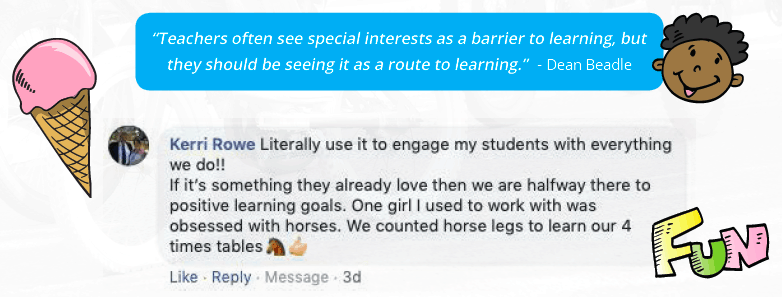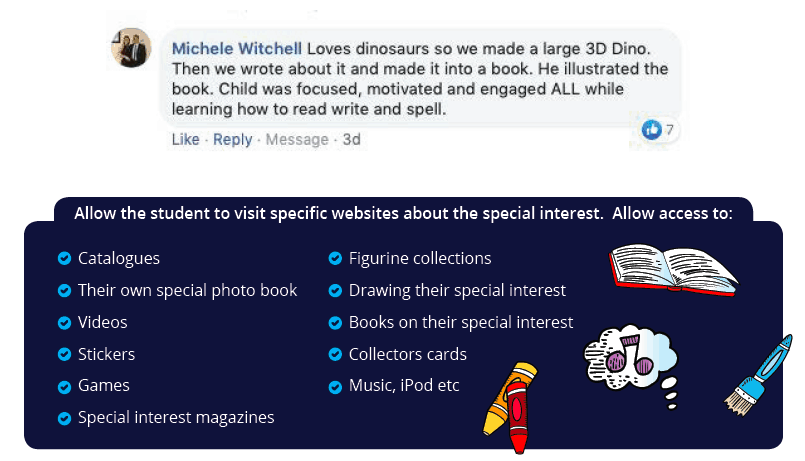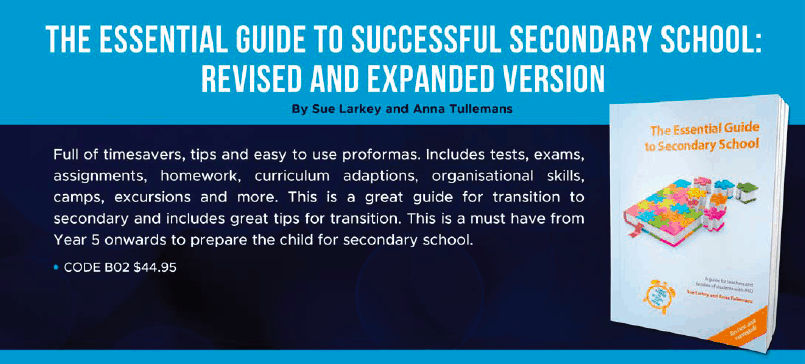Using Special Interests to Motivate and Engage Students
Special interests, fixations and self-stimulation are often a very important part of life for someone with autism. They are usually their only form of relaxation and down time. Special interests and fixations often give the child something they can control and is predictable to them, bringing order to their world. Special interests can include drawing, Lego, Minecraft, Music, YouTube and so much more. Self-stimulation can be more sensory based like rocking, hand flapping, twirling, vocal stimming and more. If you are unsure what their special interest or self-stimulation is, watch what the child is doing when they are left alone. These can often be quite bizarre – over the years I have seen collecting bottle tops, filtering tan bark, fans, lights, light bulbs and vacuum cleaners.
It is very important that we have in place the rules and routines around special interests, as they find it hard to finish and self-regulate. Special interests should also be used to motivate and engage students. By using a child’s special interest we can teach them just about anything!

MOTIVATING AND KEEPING THE STUDENT ON TASK
A student with autism’s needs are very complex as they don’t respond to the social rewards that teachers often employ with other students. Things such as a smile or praise for good work can sometimes go unnoticed. Sometimes a teacher will use that look to refocus students or to keep them on task or to warn them. However this is usually ineffective for autistic students as they find body language and gestures difficult to interpret and often don’t look at the teacher’s face.

The student doesn’t always know how to respond to praise. Keep in mind how and when you give praise. Explain to the student why you are giving praise and how great it feels to receive praise. This is one of those warm fuzzy feelings that they are not sure how to respond to.
Excerpts from The Essential Guide to Successful Secondary School by Sue Larkey and Anna Tullemans
What if they don’t have a Special Interest?
This is rare and usually only happens when their anxiety and confusion levels are overwhelming. Talk to the parents about a previous special interest and try to renew this interest.
How to use this Special Interest
Controlling Access to Special Interest
There needs to be guidelines around the access to this special interest. These guidelines and parameters need to be very specific.
- Have rules on when the special interest can occur
- Make sure there are clear guidelines when using this as a reward. For exmaple “When you have completed this science experiemnt then you can read your Star Wars book for five minutes”
- Always let the student know when the next access will be. “When the five minutes is finished you can have the Star Wars book again when you have finished Maths”
- Never tell them straight out NO for the Star Wars book as they will become very anxious and think they may not be allowed access to it again. Instead tell the student when they can have it again and be specific with either time or at the end of an activity. This quote below is a great example of how to use it as a positive reward and control access at the same time.
Using the Special Interest to teach Curriculum Outcomes
Select work which uses their special interest. For example in Maths use their special interest as the focus of their activity, measure, weight, circumference etc. For more ideas see pg 61 of The Essential Guide to Successful Secondary School.







 Sorry we no longer ship items outside Australia. Please consider the digital versions of Sue’s Books –
Sorry we no longer ship items outside Australia. Please consider the digital versions of Sue’s Books – 